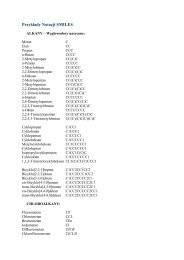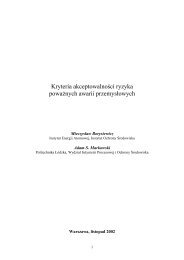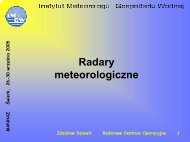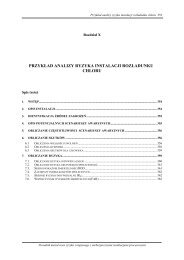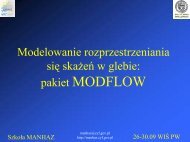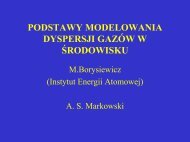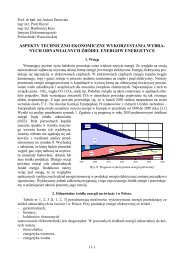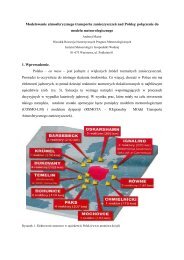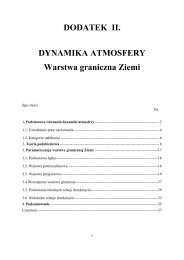Modelling of Pollutant Transport in the Atmosphere - MANHAZ
Modelling of Pollutant Transport in the Atmosphere - MANHAZ
Modelling of Pollutant Transport in the Atmosphere - MANHAZ
Create successful ePaper yourself
Turn your PDF publications into a flip-book with our unique Google optimized e-Paper software.
II Diffusion Theories and associated Atmospheric<br />
Dispersion Models<br />
In <strong>the</strong> follow<strong>in</strong>g a short review is given on <strong>the</strong> diffusion <strong>the</strong>ories and<br />
model categories from which most practical dispersion models used today<br />
are based.<br />
Fixed and mov<strong>in</strong>g frames <strong>of</strong> reference<br />
In this chapter, <strong>the</strong> word "plume" will be used to designate a cont<strong>in</strong>uous<br />
release <strong>of</strong> pollutant from a po<strong>in</strong>t source, while <strong>the</strong> word "puff" will be<br />
used about an <strong>in</strong>stantaneous released quantity <strong>of</strong> pollutant. So while <strong>the</strong><br />
different segments <strong>of</strong> pollutants belong<strong>in</strong>g to a plume all have different<br />
travel times s<strong>in</strong>ce <strong>the</strong>ir release from <strong>the</strong> source po<strong>in</strong>t, all pollutants<br />
belong<strong>in</strong>g to a s<strong>in</strong>gle puff have one, and only one age s<strong>in</strong>ce <strong>the</strong>ir start <strong>of</strong><br />
release, namely <strong>the</strong> puffs travel time t.<br />
Two fundamental different types <strong>of</strong> atmospheric dispersion must be<br />
discrim<strong>in</strong>ated:<br />
1. Fixed frame concentrations<br />
2. Mov<strong>in</strong>g frame concentrations<br />
The fixed frame averaged concentration is measured at, or is referred<br />
to, at fixed po<strong>in</strong>ts (on <strong>the</strong> ground), while <strong>the</strong> <strong>in</strong>stantaneous concentration<br />
refers to a mov<strong>in</strong>g frame <strong>of</strong> reference, which follows with <strong>the</strong> cloud or<br />
puff's centre <strong>of</strong> mass. For this reason, averaged (whe<strong>the</strong>r time averaged<br />
or ensemble-averaged), dispersion is <strong>of</strong>ten referred to as " fixed frame"<br />
dispersion or absolute dispersion- while <strong>in</strong>stantaneous dispersion <strong>of</strong>ten is<br />
referred to as "mov<strong>in</strong>g frame dispersion, or "relative dispersion". The<br />
physical mechanisms beh<strong>in</strong>d <strong>the</strong> two types <strong>of</strong> dispersion are quite<br />
different: While <strong>the</strong> averaged mean concentration and its associated<br />
dispersion, process phenomenologically can be described by s<strong>in</strong>gle and<br />
<strong>in</strong>dependent fluid particle's trajectory ensemble statistics; <strong>the</strong><br />
<strong>in</strong>stantaneous puff dispersion process <strong>in</strong>volves at least <strong>the</strong> jo<strong>in</strong>t statistics<br />
<strong>of</strong> two fluid particles or more at <strong>the</strong> same time.<br />
Much fundamental research and <strong>the</strong>oretical formation has dur<strong>in</strong>g <strong>the</strong><br />
past century been devoted to model and describe <strong>the</strong> turbulent diffusion<br />
process with<strong>in</strong> <strong>the</strong> atmosphere The field has <strong>in</strong> particular been dom<strong>in</strong>ated<br />
12



